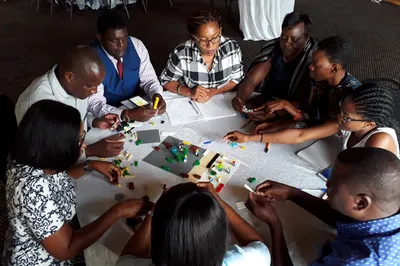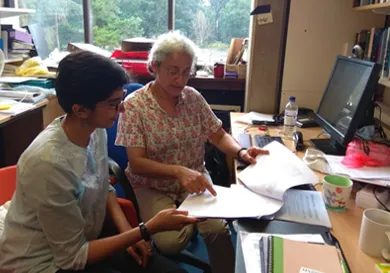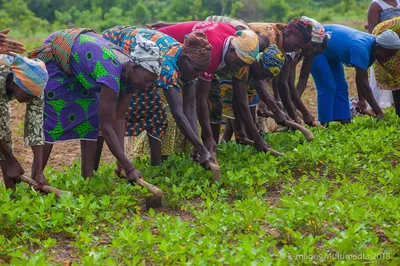Researching the barriers and enablers to effective adaptation
To date, most adaptation efforts have focused on reactive, short-term, and site-specific solutions to climate-related vulnerabilities. Although important, these responses often fail to address the root causes of vulnerability and shed no light on how to spur larger-scale and longer-term adaptation that has positive effects on socio-economic development.
Using research and practice to address this information shortfall, ASSAR’s primary aim was to produce future-focused and societally-relevant knowledge of potential pathways to greater wellbeing through adaptation.

A transformational philosophy to research
ASSAR embraced a transformational philosophy to climate change adaptation, using insights from multi-scale, inter- and transdisciplinary work to improve understanding of the barriers and enablers to effective, sustained and widespread adaptation out to the 2030s. We considered adaptation through three principal research lenses. These emphasised the dynamics of ecosystem services, social differentiation, and governance. Knowledge systems and gender dimensions relate to all these lenses, and acted as cross-cutting themes throughout.
This conceptual framing emphasised the need to understand climate change within an interlinked set of other dynamics in drylands – typically a combination of environmental, social, economic, cultural, political, and administrative changes. This dynamic setting is particularly evident in semi-arid regions, in part because dryland populations have historically been among the most marginalised but are today increasingly exposed to mainstream influences. It is only through recognising and understanding the interlinked dynamics that shape vulnerability and adaptive capacity in semi-arid regions that the challenges and prospects for management of climate impacts can be adequately analysed and translated into adaptation policy and practice.

Each of ASSAR’s research teams focused their case-study based investigations on regionally-relevant, socio-ecological risks and dynamics that related centrally to livelihood transitions, and access, use, and management of land and water resources. The teams worked in a coordinated manner to enable ASSAR to develop a systemic understanding of the processes and factors that impede adaptation and cause vulnerability to persist.
Creating relevant, usable research

To ensure better linkages between adaptation research, policy and practice, ASSAR employed a Research-into-Use approach. Our research was stakeholder-guided, and responded to the adaptation challenges faced by people living and working in semi-arid regions.
ASSAR’s work was underpinned by early and continued stakeholder engagement based on interactive stakeholder mapping and power analyses. We targeted different levels of adaptation practice and policy, from local communities and organisations, to sub-national and national governments and institutions.
We used multi-stakeholder, participatory processes – such as Vulnerability and Risk Assessments, Transformative Scenario Planning, and Participatory Scenario Analysis – to bring together key stakeholders. The aim was to build common understanding of current adaptation needs and past adaptation failings, while co-producing adaptation responses that can yield appropriate, tangible, and lasting benefits.
We also worked to develop audience-appropriate communication products to ensure that important research findings reached the right people, at the right time, and in the right way.
Strengthening capacities within and outside ASSAR
To ensure that ASSAR’s impact would live on after the project was completed, we prioritised building the capacity of project team members, and a variety of external stakeholders in our regional study sites.
Enhancing researcher skills and abilities


Financial support: We provided financial support for postgraduate students (for fieldwork and full study programs), postdoctoral researchers, and research associates. In total, we offered academic and research-focused capacity building grants to support approximately 100 early- and mid-career researchers.
Training and workshops: Through specialised training opportunities and workshops, we built researcher capacities in specific areas. These included gender, Research-into-Use, Vulnerability and Risk Assessments, Transformative Scenario Planning, experiential learning, land use and land cover change, and climate science.
Upskilling early-career researchers: Project members also benefited from Small Opportunities Grants. These gave early-career researchers the chance to tap into a broad range of strengths, skills, perspectives, and ideas across different semi-arid hotspots. These opportunities contributed towards joint outputs across the ASSAR regions. Through these grants we bolstered the influencing and communications capacity of ASSAR researchers, built stronger ties with stakeholders in the regions, trained early-career researchers to work with stakeholders on improving local adaptation efforts, and boosted the Research-into-Use work done by regional teams.
Building capacity among vulnerable groups

Our two external capacity building initiatives - the Grants for Local Adaptation Support (ASSAR GLAS) and Scenario Based Capacity Building (SBCB) grants - helped strengthen the relevance and sustainability of ASSAR’s research. The ASSAR GLAS were developed in order to use our research findings to help support the most vulnerable groups in each region. They focused on supporting women’s groups, strengthening disaster risk management, integrating climate and development projects, and fostering peer-to-peer learning among stakeholders. We used the SBCB grants to build on the momentum and connections made during the regional teams’ participatory processes, and to align these with ongoing ASSAR findings to attain actionable results. Specifically, these awards served to build capacities of those stakeholders who played vital roles in overcoming barriers to, or supporting enablers of, adaptation. They focused on topics including irrigation and soil fertility management, accessing climate information, and invasive species management.